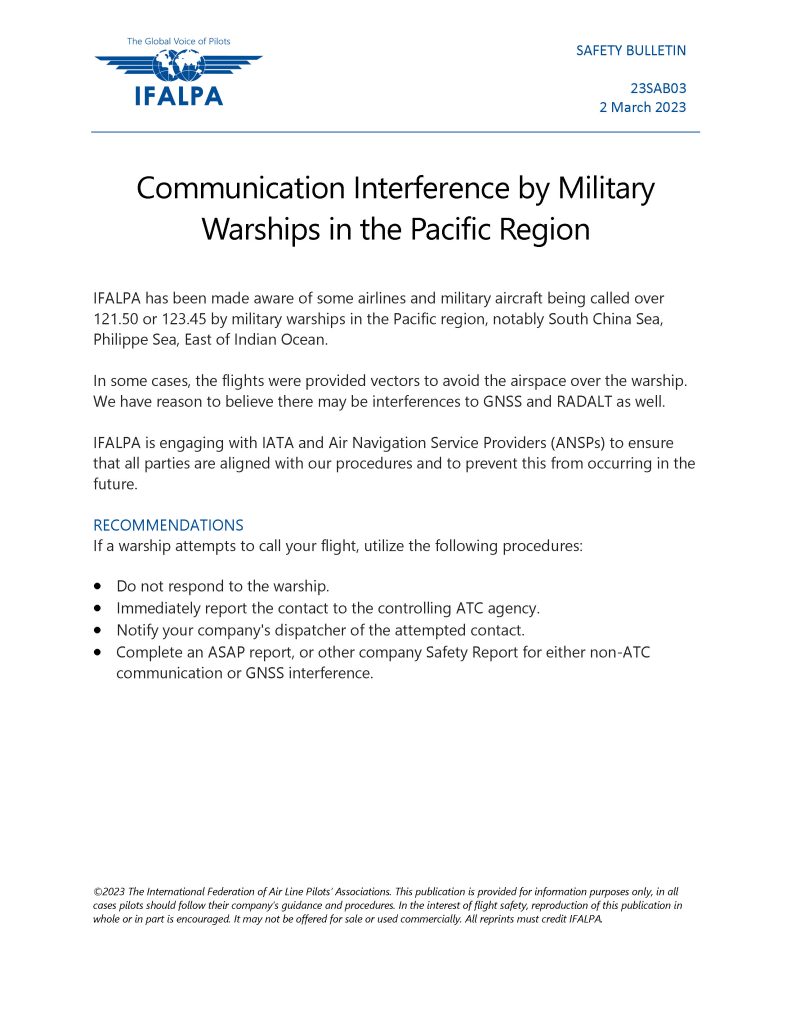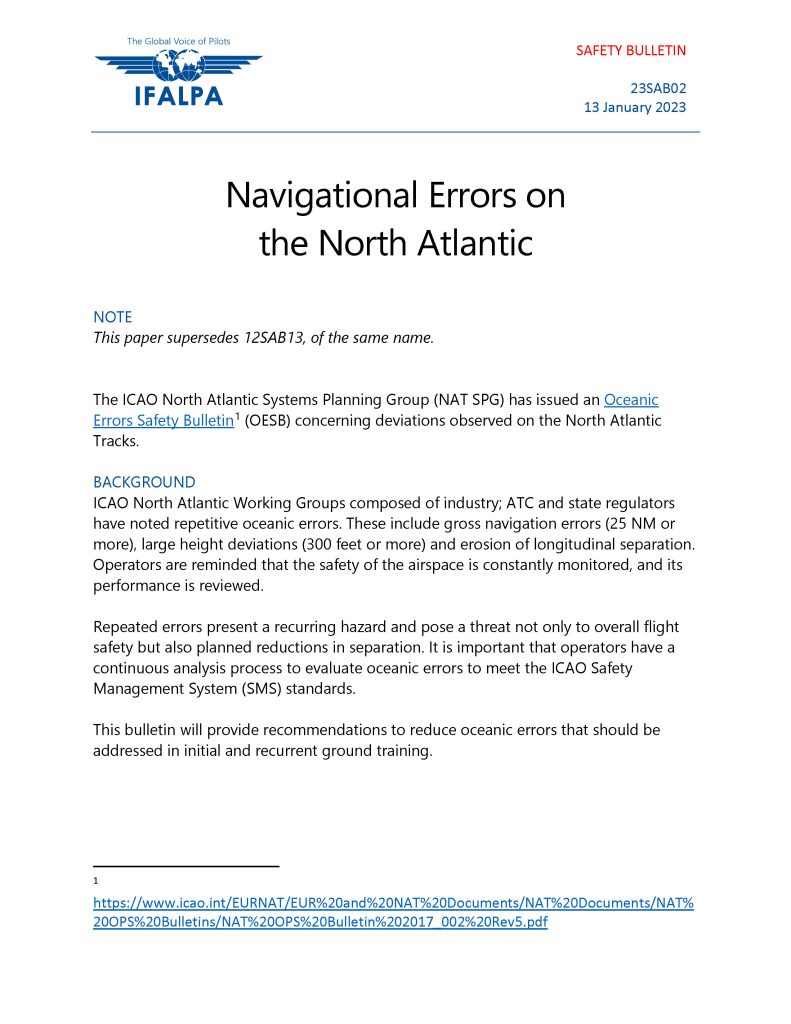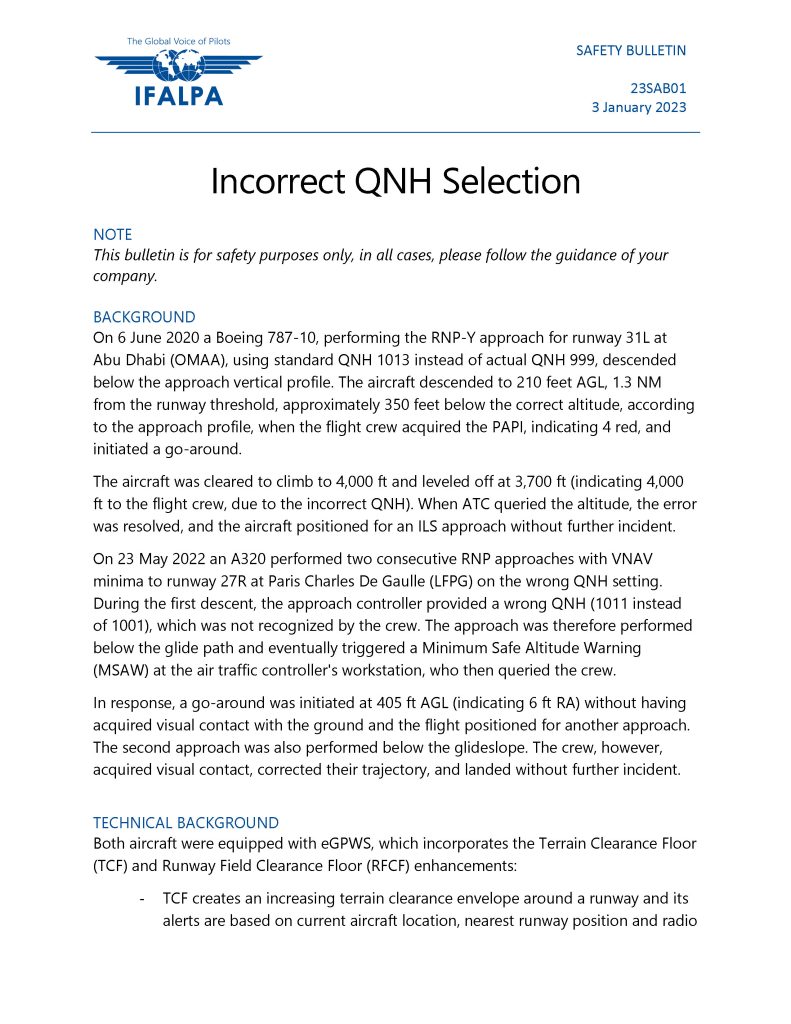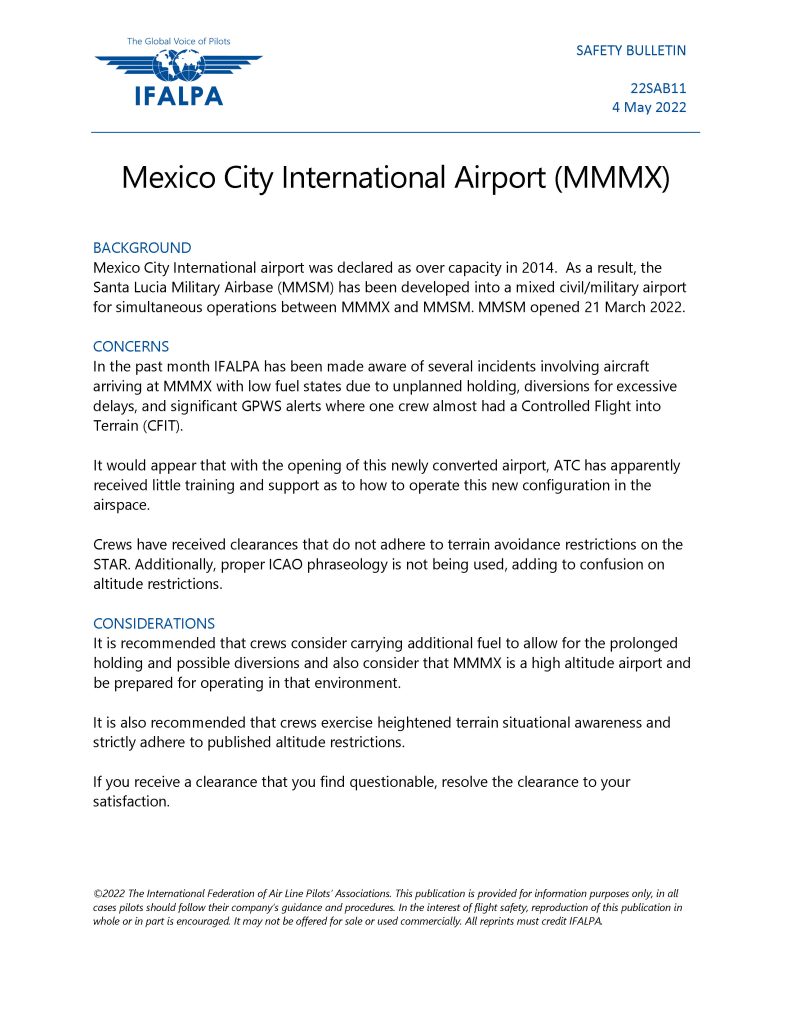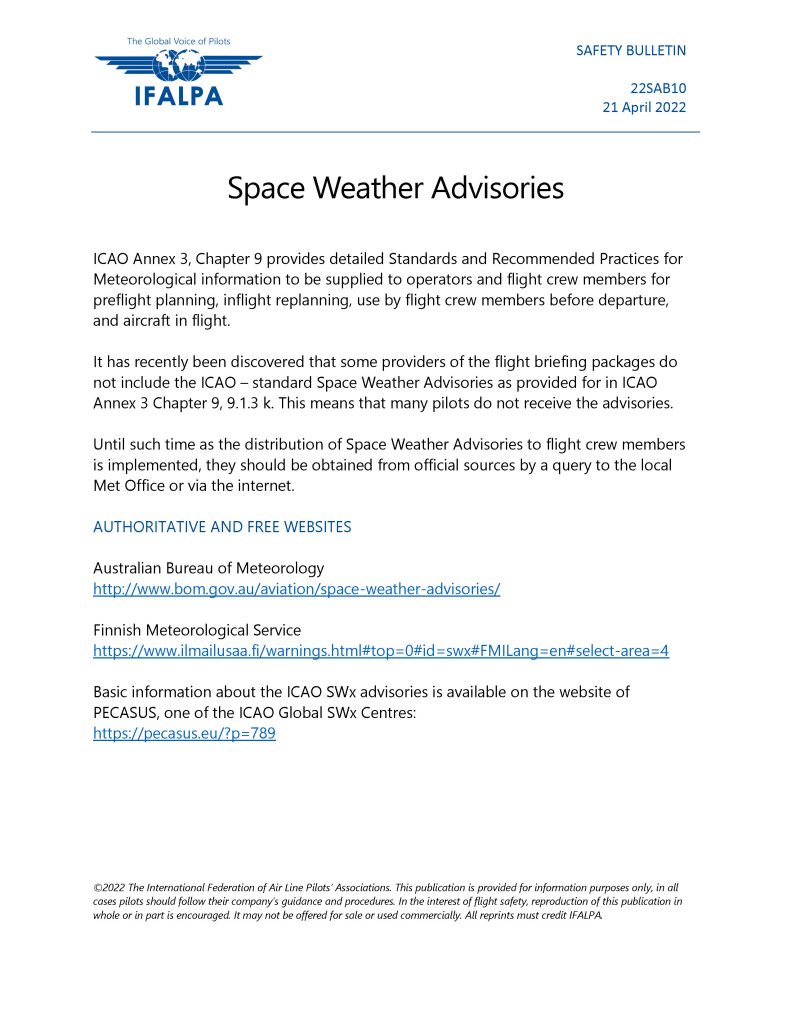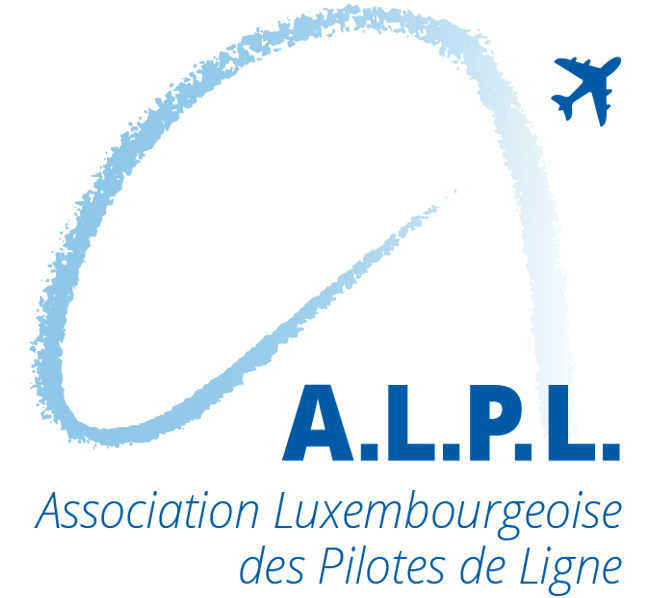IFALPA published a Safety Bulletin concerning incorrect QNH selection.
Background
On 6 June 2020 a Boeing 787-10, performing the RNP-Y approach for runway 31L at Abu Dhabi (OMAA), using standard QNH 1013 instead of actual QNH 999, descended below the approach vertical profile. The aircraft descended to 210 feet AGL, 1.3 NM from the runway threshold, approximately 350 feet below the correct altitude, according to the approach profile, when the flight crew acquired the PAPI, indicating 4 red, and initiated a go-around.
The aircraft was cleared to climb to 4,000 ft and leveled off at 3,700 ft (indicating 4,000 ft to the flight crew, due to the incorrect QNH). When ATC queried the altitude, the error was resolved, and the aircraft positioned for an ILS approach without further incident.
On 23 May 2022 an A320 performed two consecutive RNP approaches with VNAV minima to runway 27R at Paris Charles De Gaulle (LFPG) on the wrong QNH setting. During the first descent, the approach controller provided a wrong QNH (1011 instead of 1001), which was not recognized by the crew. The approach was therefore performed below the glide path and eventually triggered a Minimum Safe Altitude Warning (MSAW) at the air traffic controller’s workstation, who then queried the crew.
In response, a go-around was initiated at 405 ft AGL (indicating 6 ft RA) without having acquired visual contact with the ground and the flight positioned for another approach. The second approach was also performed below the glideslope. The crew, however, acquired visual contact, corrected their trajectory, and landed without further incident.
We encourage you to read the full Safety Bulletin. In any case specific procedures of your operator will prevail.


